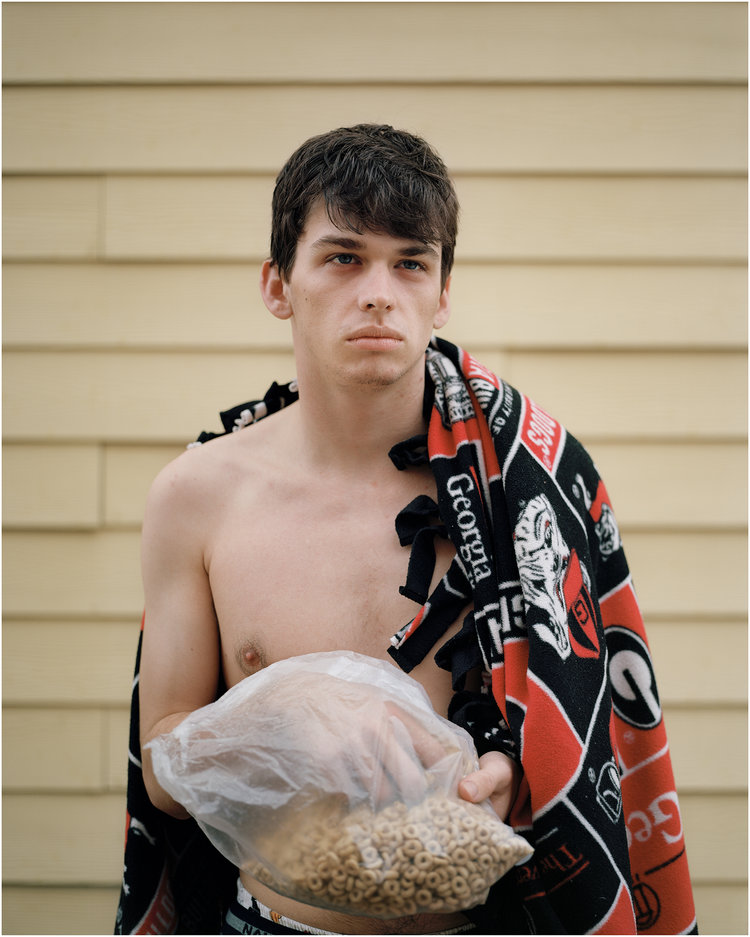
Exhibitions: Jill Frank KY
Jill Frank
everyone who woke up at the yellow house
November 3 - December 9, 2017

Jill Frank, Untitled, 2016, digital photograph
Jill Frank
everyone who woke up at the yellow house
November 3 – December 9, 2017
Institute 193, Lexington
Evening fell, ambiguous autumn evening:
The beauties, dreamers who leaned on our arms,
Whispered soft words, so deceptive, such charms,
That our souls were left quivering and singing.
— from “The Innocents” by Paul Verlaine,
translated by A.S. Kline
Jill Frank’s photographs preserve spaces, situations, and bodies in transition. Her subjects are caught in the awkward space between adolescence and adulthood, intoxication and sobriety, and are housed in suburbs, a similarly in-between geography straddling urban and rural, wealthy and not. They are photographed during or immediately after moments of what the artist describes as “social performances,” where selfhood is projected, negotiated, and compromised in service of an audience of peers.
In the case of her series everyone who woke up at yellow house, the morning after a house party is documented vis-à-vis its effects on the bodies of those in attendance. The large portraits on view depict successive moments on opposing sides of a single frame that were taken split seconds apart, but present entirely different images, a visual cue that a single photograph isn’t capable of encapsulating the mercurial identities of these young participants. Garments are draped lazily over tired flesh, makeup runs, skin is blotched, bloated, and marked by acts of love and violence. A related series also on display, taken the same day in the same location, shows four of the young men fighting on a suburban street corner. In several of the frames, a body is frozen in mid-air, horizontally suspended between ground and sky while being heaved by another.
The social rituals explored throughout Frank’s body of work are often categorized by society-at-large as frivolous phases to be worked through on the way to adulthood rather than ways of being in their own right. The reverence and seriousness with which she presents her subjects and their experience, however, flip the script, presenting youth as a complicated, layered, and altogether whole form of existence, instead of merely the penultimate step one must take before reaching maturity, itself an increasingly vague thing towards which to aspire. In Frank’s photographs, youth is not flat, fixed, or a means to an end, but rather a period of life worthy of consideration, contemplation, and documentation.

Installation View

Installation View

Installation View

